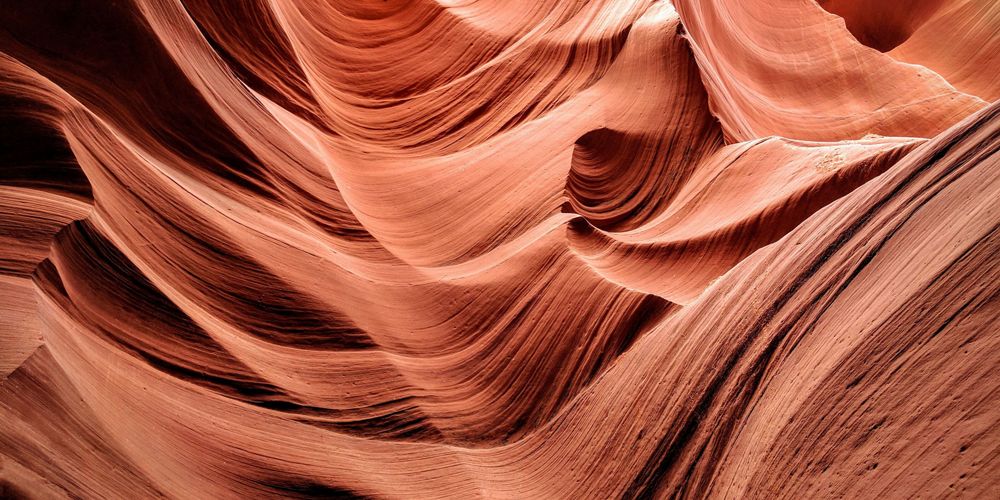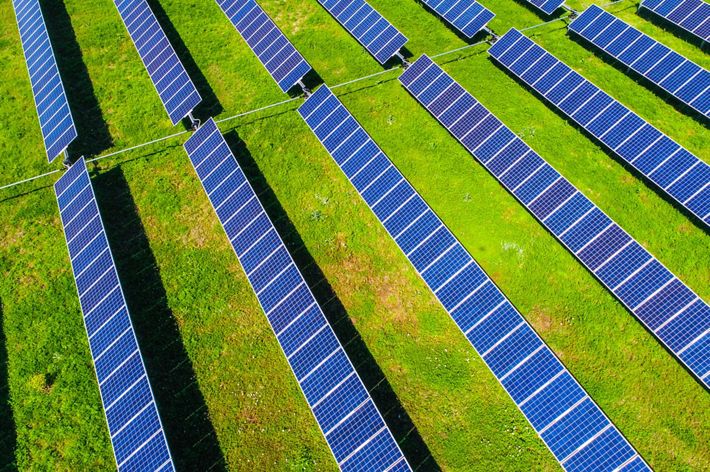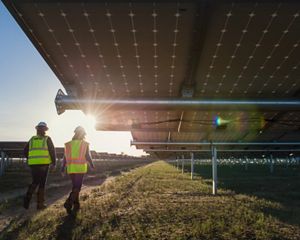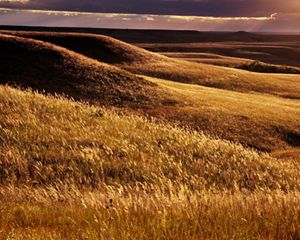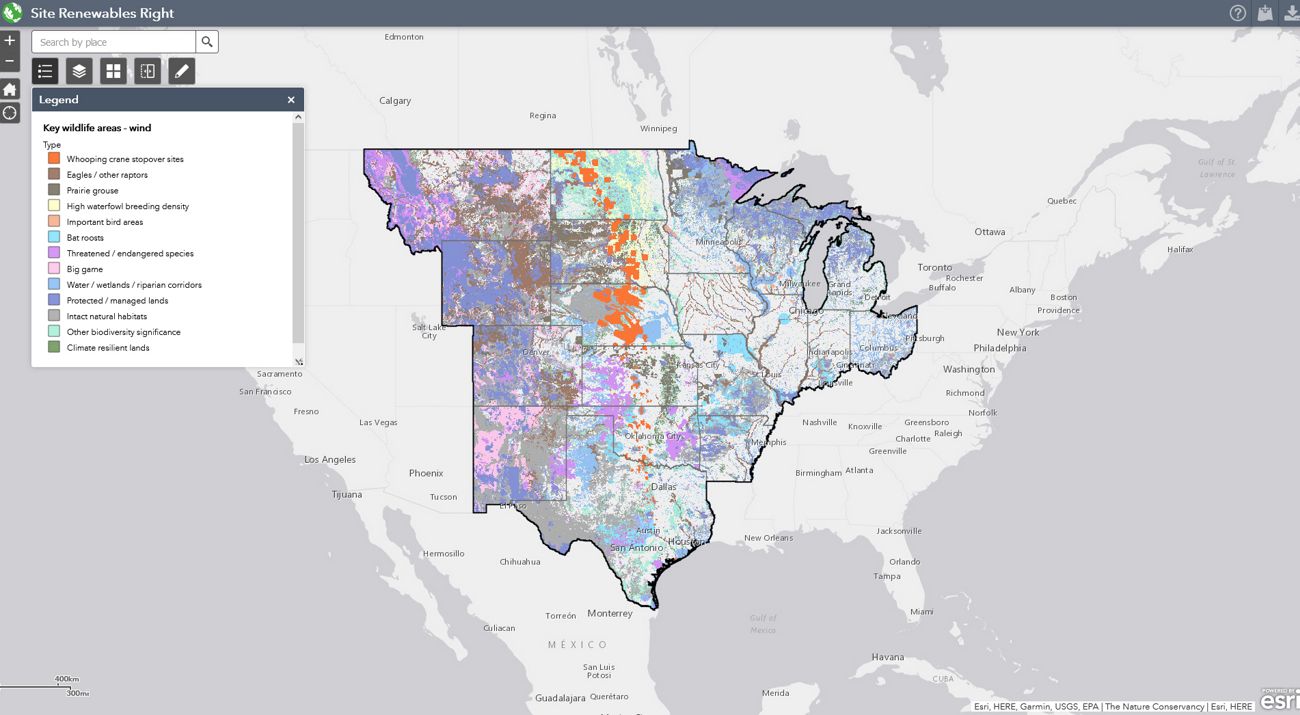
Have feedback? Participate in our survey
Your input is invaluable to Site Renewables Right
Take the SurveyThe Nature Conservancy supports the rapid expansion of renewable energy, and the ample wind and solar resources in the central U.S. offer the opportunity to provide clean, low-impact power for people and wildlife.
Achieving the clean energy build-out necessary to meet our climate goals will require quadrupling our renewable energy capacity in the United States by 2050. Up to 75% of the nation’s new large renewable energy projects will occur in the central U.S., home to much of the nation’s most promising wind and solar resources.
The central U.S. also provides our best remaining grassland habitat in North America, and the unique wildlife that is home on this range, such as bison, pronghorn and prairie chickens. The Site Renewables Right map identifies where renewable energy can be developed in the central U.S. while still conserving important wildlife habitats and natural areas at the same time. It’s a win-win.
The Site Renewables Right Map
To help accelerate the deployment of renewable energy in a way that helps people and nature thrive, The Nature Conservancy is providing the Site Renewables Right interactive online map. The map synthesizes more than 100 layers of engineering, land-use and wildlife data.
Site Renewables Right provides a way for companies and communities to engage in the right conversations to avoid project delays and impacts to the very same wildlife and natural areas we are trying to protect from climate change.
Site Renewables Right has received support from a diverse group representing business, research, conservation and agricultural voices.
Site Renewables Right in Action
“Renewable energy and transmission are critical to reducing emissions and slowing global temperature rise to ensure a cleaner future for both people and wildlife. The Site Renewables Right tool plays an important role in Audubon’s analysis of clean energy planning and individual projects to make sure that conservation and renewables go hand-in-hand.”
- Garry George, Director of Clean Energy Initiative, National Audubon Society
“The Nature Conservancy’s Site Renewables Right map is an excellent example of data capture that helps organizations make informed business decisions when evaluating renewable energy projects. Projects that are properly sited and developed support a sustainable and equitable clean energy transition, a critical lever in achieving our net-zero by 2040 goal and broader pep+ (PepsiCo Positive) ambitions.”
- Roberta Barbieri, VP Global Sustainability, PepsiCo
“Renewable energy plays a critical role in Xcel Energy’s vision to deliver at least 80% emissions reduction by 2030, and we’re responsibly developing wind and solar resources to protect the environment. We’re committed to working with organizations such as The Nature Conservancy and its Site Renewables Right initiative that researches and supports protecting wildlife and other natural resources as we provide a clean energy future for our customers.”
- Jeff West, Senior Director of Environmental Services, Xcel Energy
“The Nature Conservancy is a recognized and trusted advocate for natural resources and biodiversity. The Site Renewables Right Map enables multi-benefit solutions for the critical renewable energy investment needed to address the climate crisis. Site Renewables Right demonstrates that developers, communities and natural resource advocates can work in partnership to create a new energy future.”
- Brian Ross, Vice President, Renewable Energy, Great Plains Institute
“I am a strong supporter of Site Renewables Right. It will help us be better stewards of the land by protecting wildlife and the wide-open spaces of the Great Plains, while also advancing opportunities for a cleaner energy future.”
- Ford Drummond, Oklahoma rancher and TNC Board Member
Get in Touch
Have a question about Site Renewables Right? Send us an email.
Global Recognition
The Nature Conservancy’s Site Wind Right map, a prior version of TNC's Site Renewables Right map, won the 2021 “Environmental Protection” Good Practices award from Renewable Grid Initiative (RGI), a European organization focused on energy transmission system operators and non-governmental organizations.
Site Renewables Right Downloads (.lpk files)
Renewable Siting Resources
-

Site Renewables Right FAQs
More information about TNC's Site Renewables Right mapping tool. Download the FAQs
-
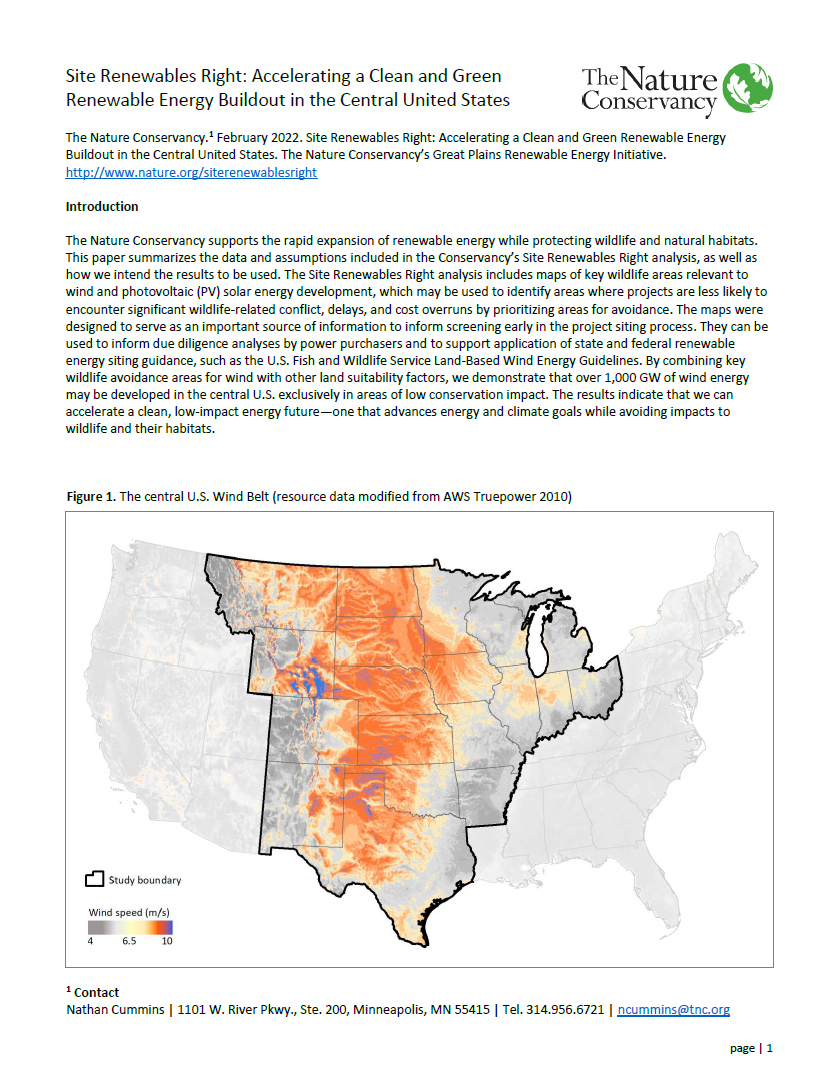
Site Renewables Right Methods Paper
Details of Site Renewables Rights methods and maps. Download the Methods Paper
-

Site Wind Right Methods Paper in Land
Site Wind Right: Identifying Low-Impact Wind Development Areas in the Central United States Download the Paper
-

Greening the Clean Energy Transition
Smart Siting and Pollinator-Friendly Solar Energy in Illinois Download the Guide
-

PV-SMaRT
Best Practices: Photovoltaic Stormwater Management Research and Testing Download the Best Practices
The Global Insights Newsletter
Get our timely takes on some of the biggest challenges facing people and the planet.
